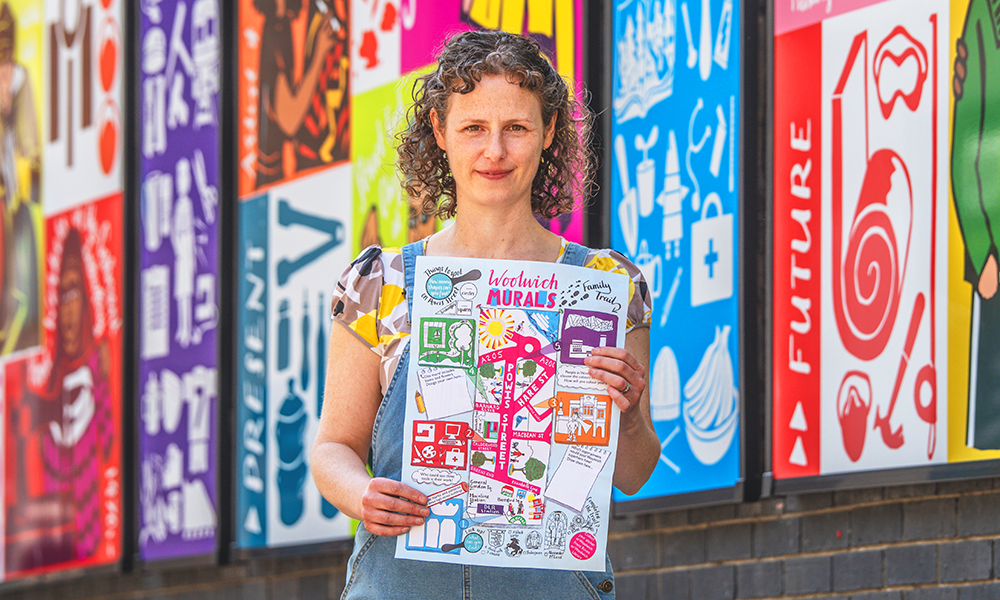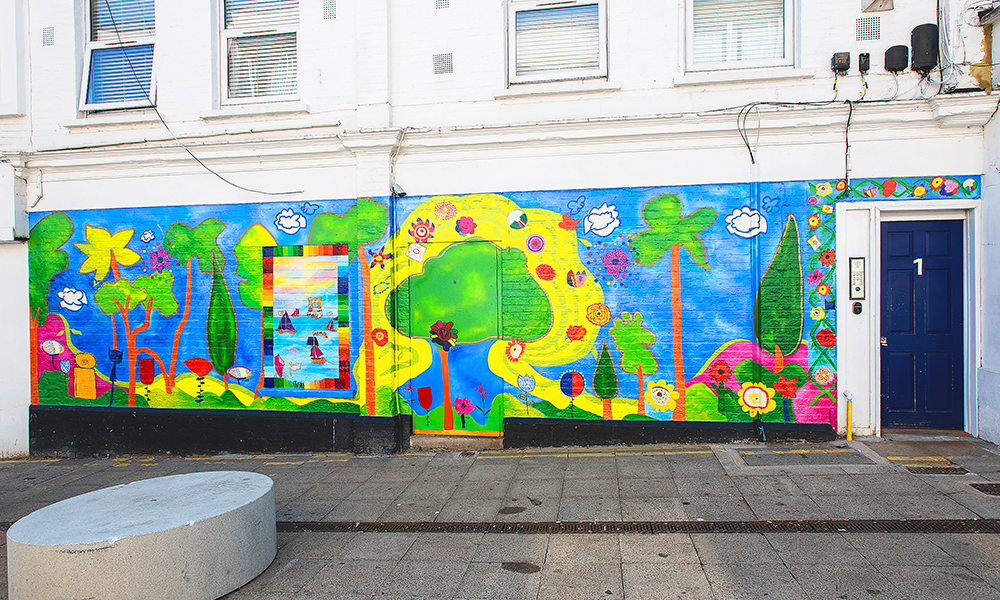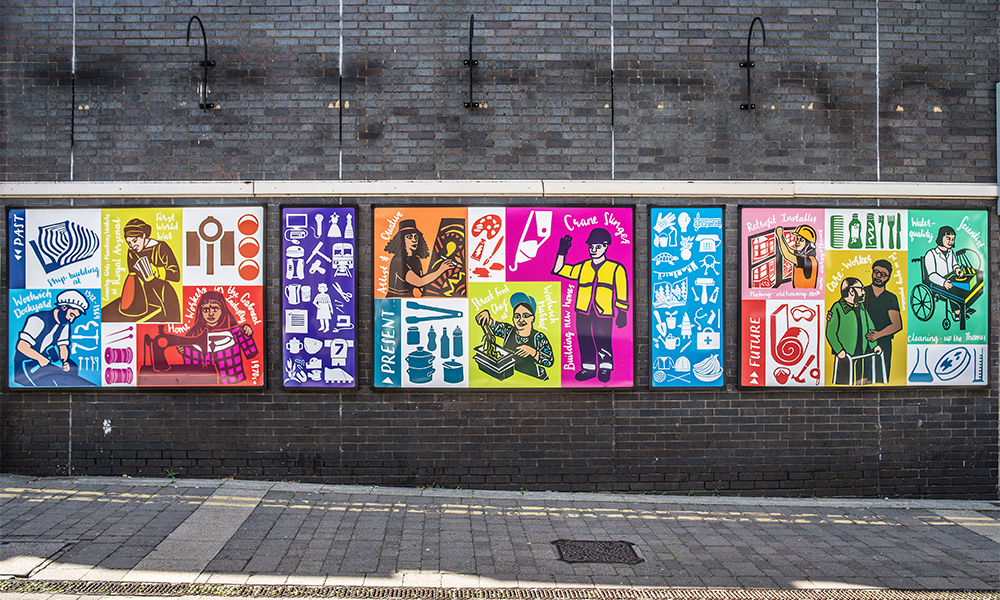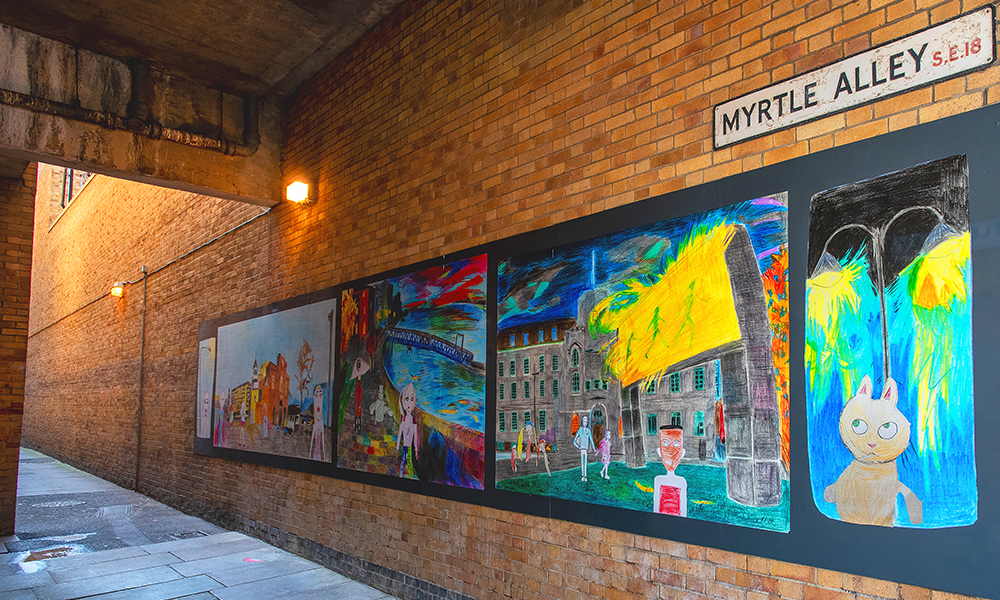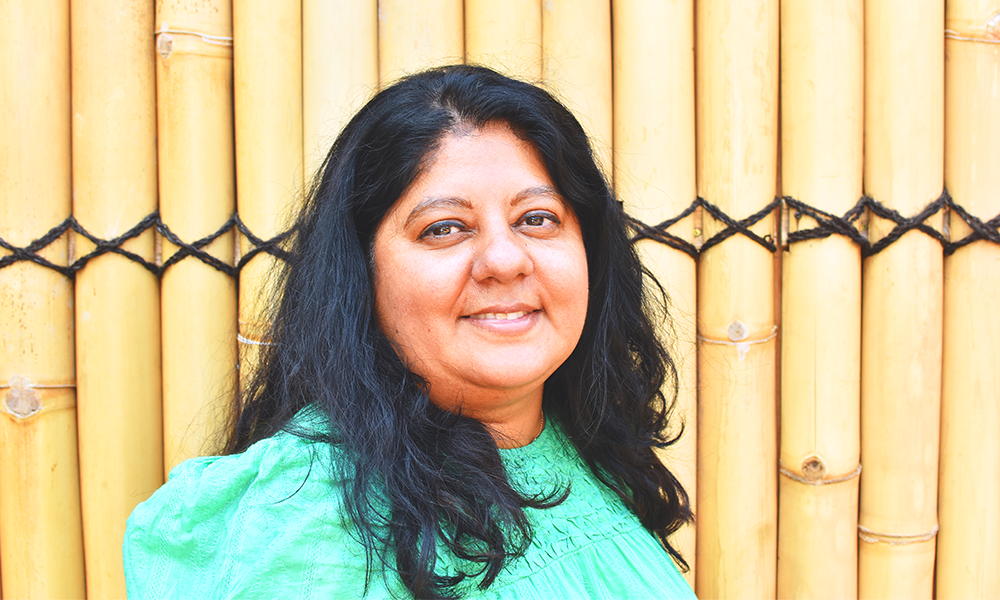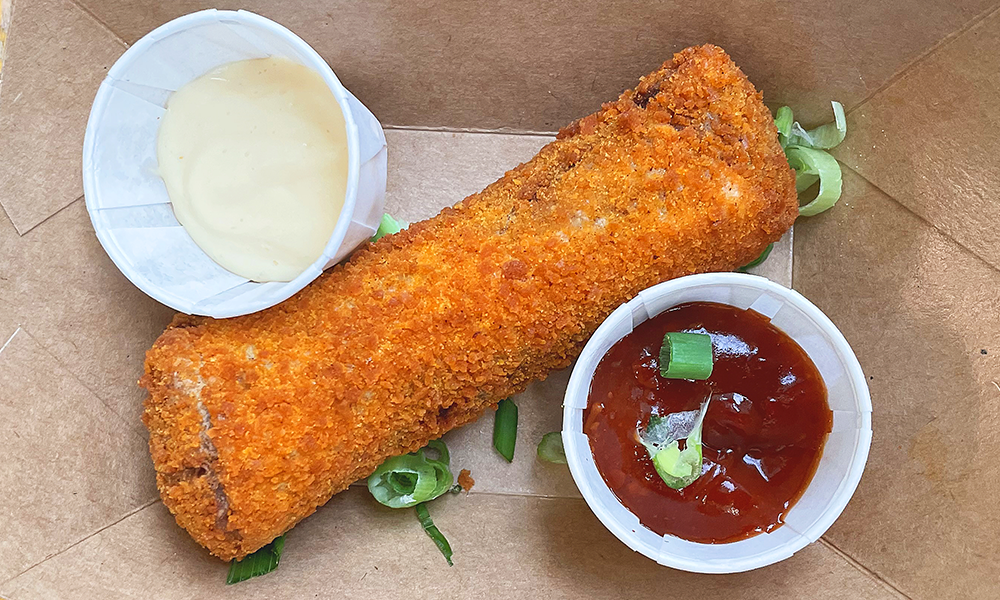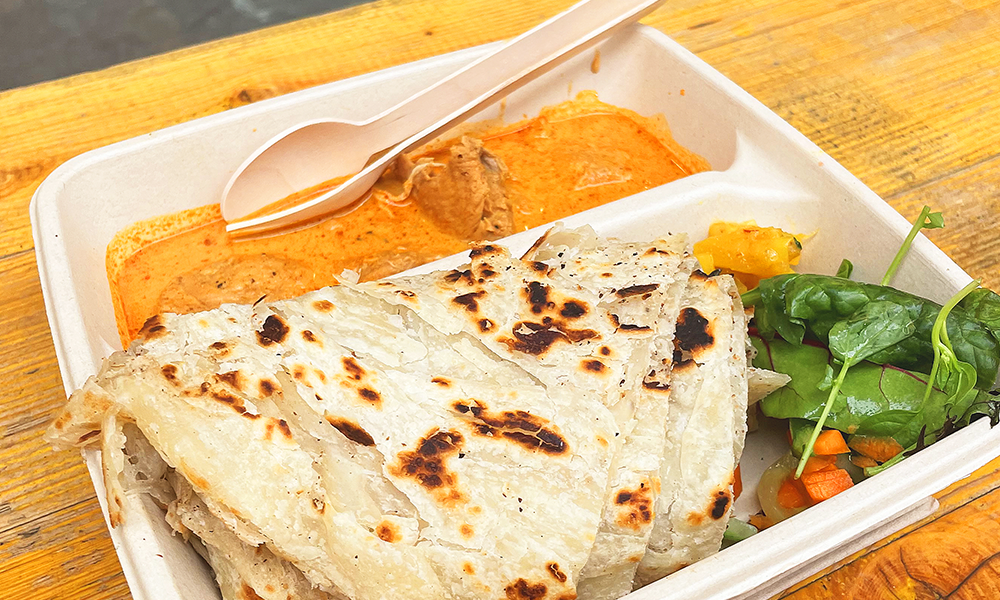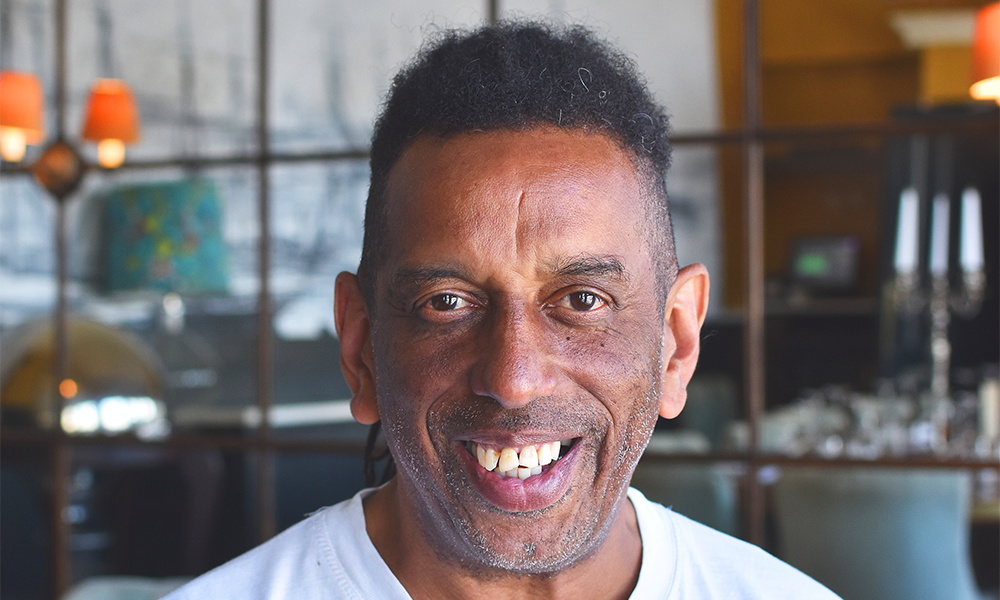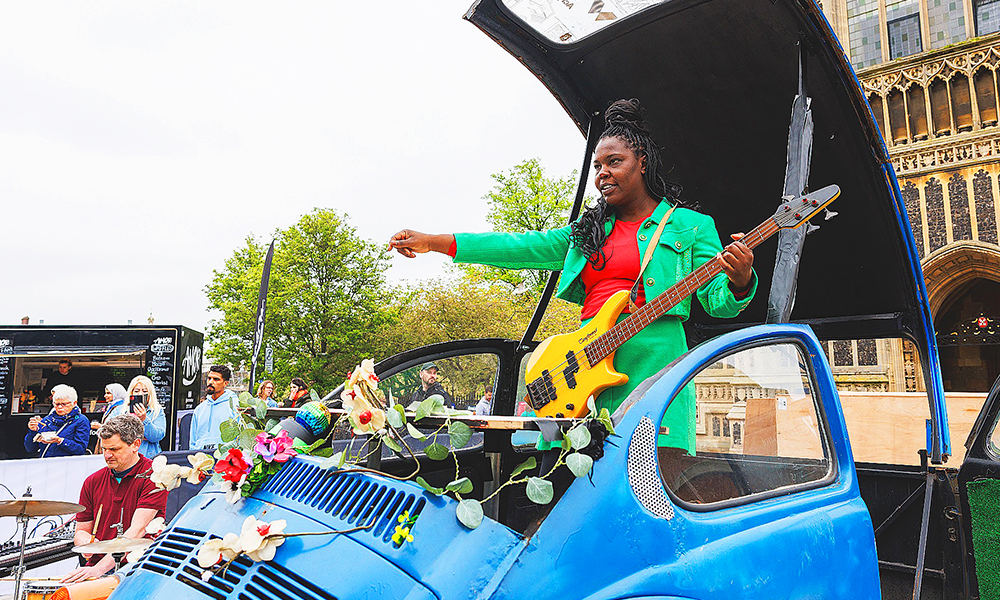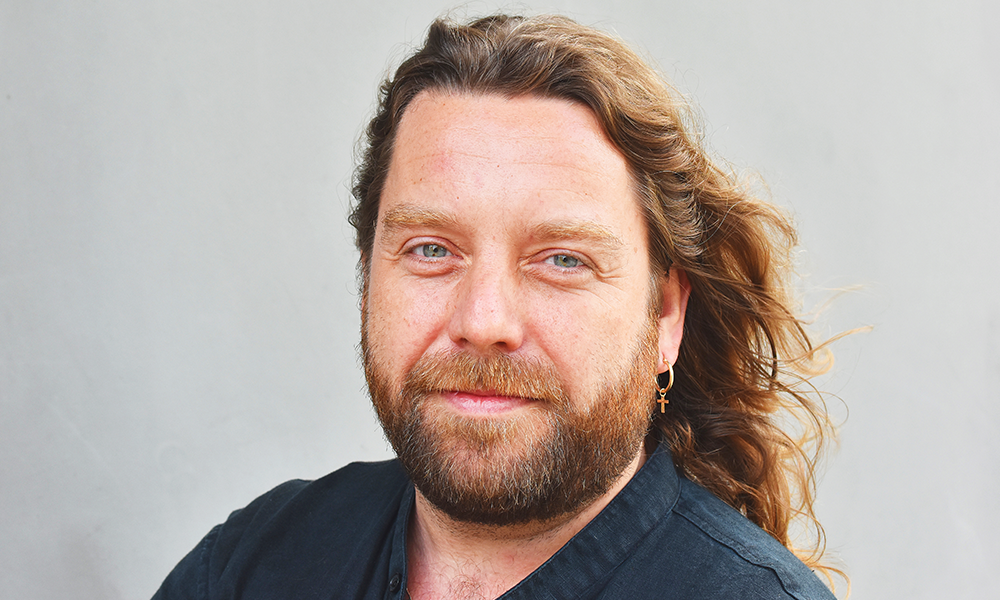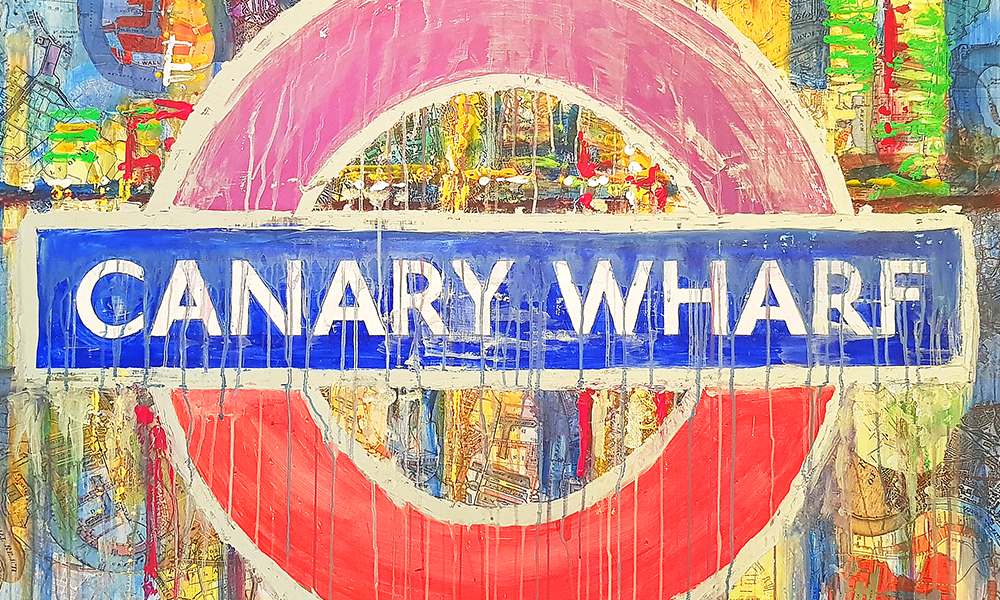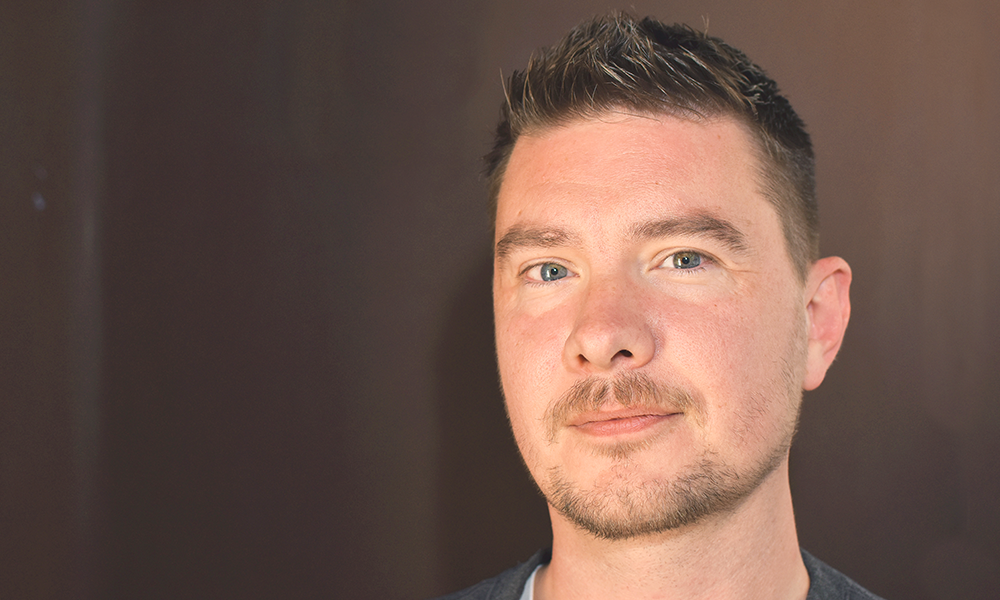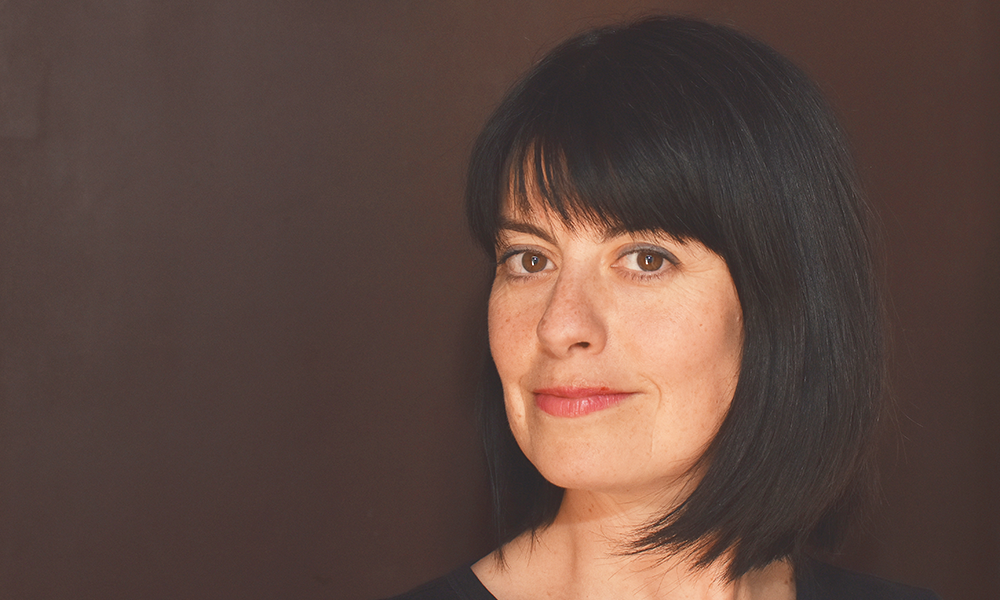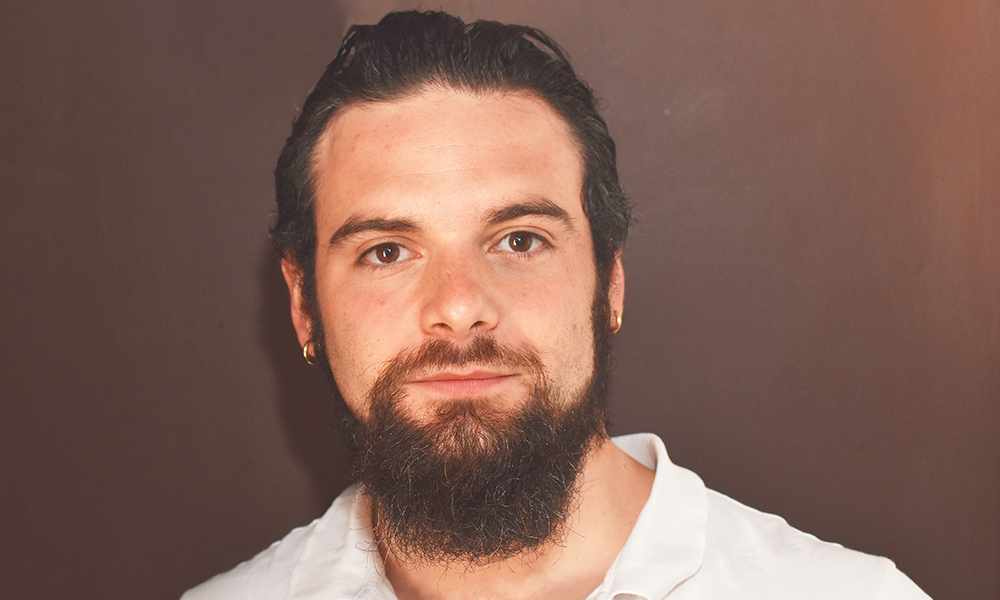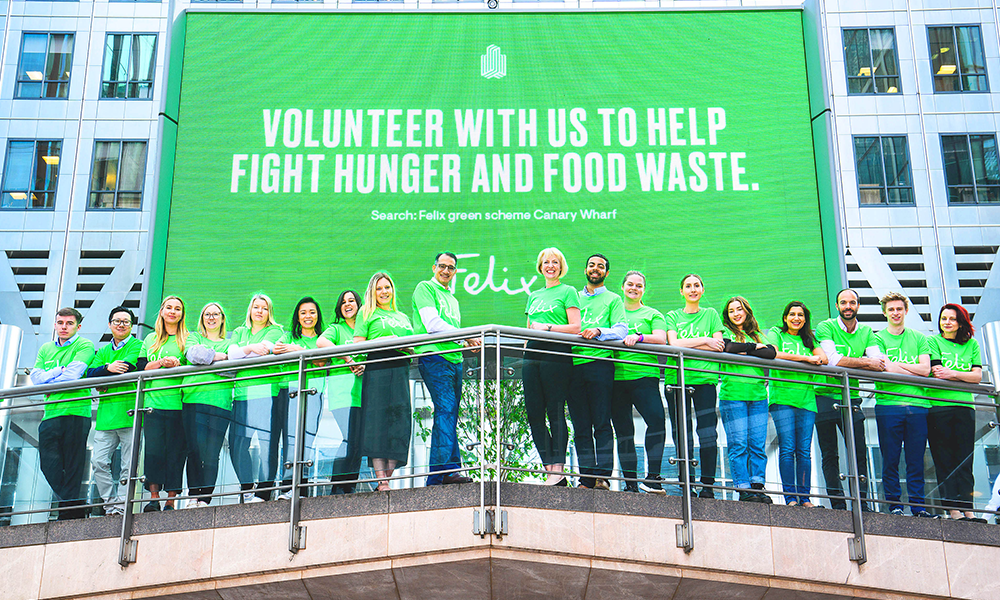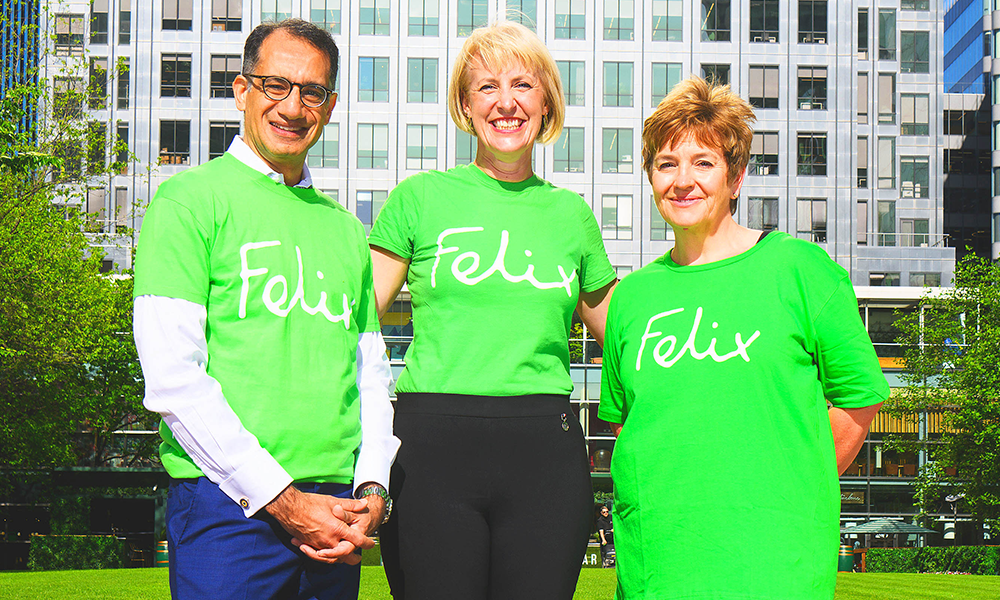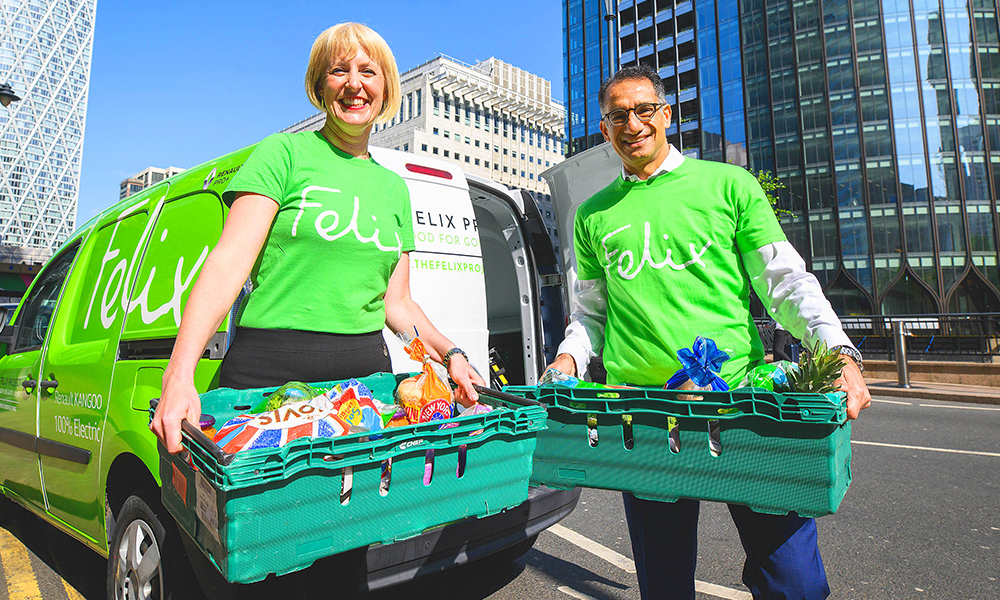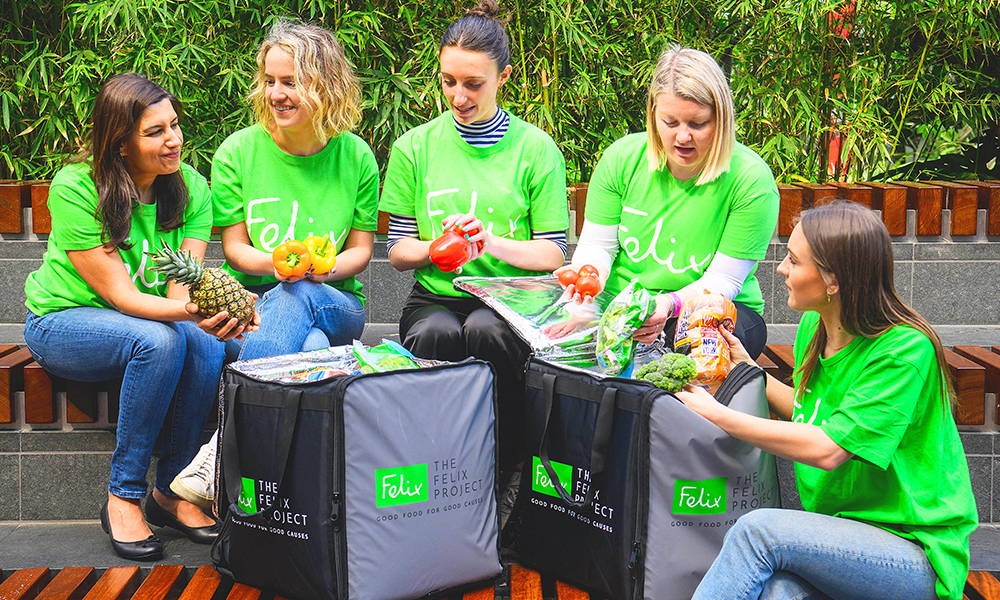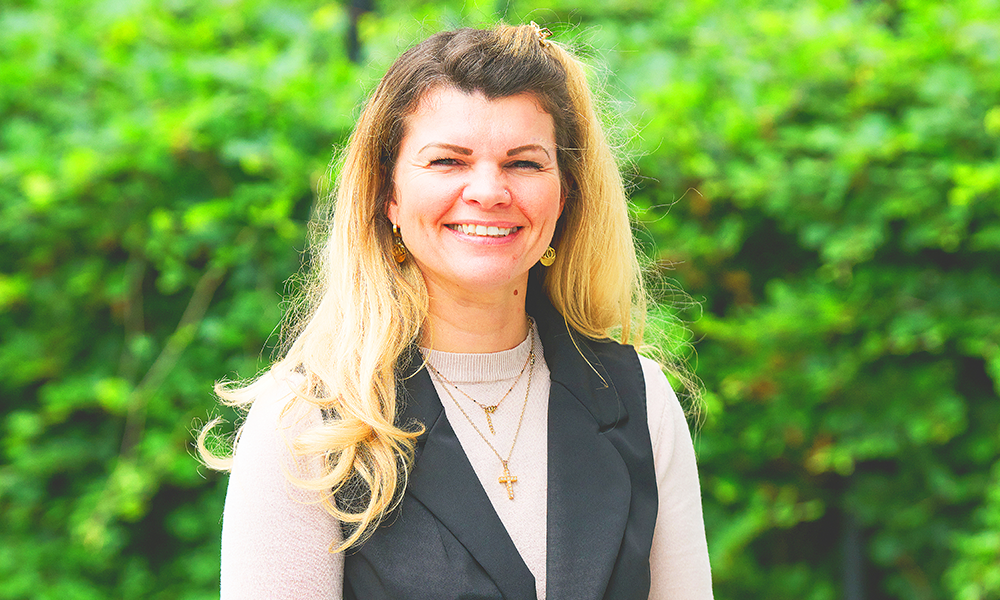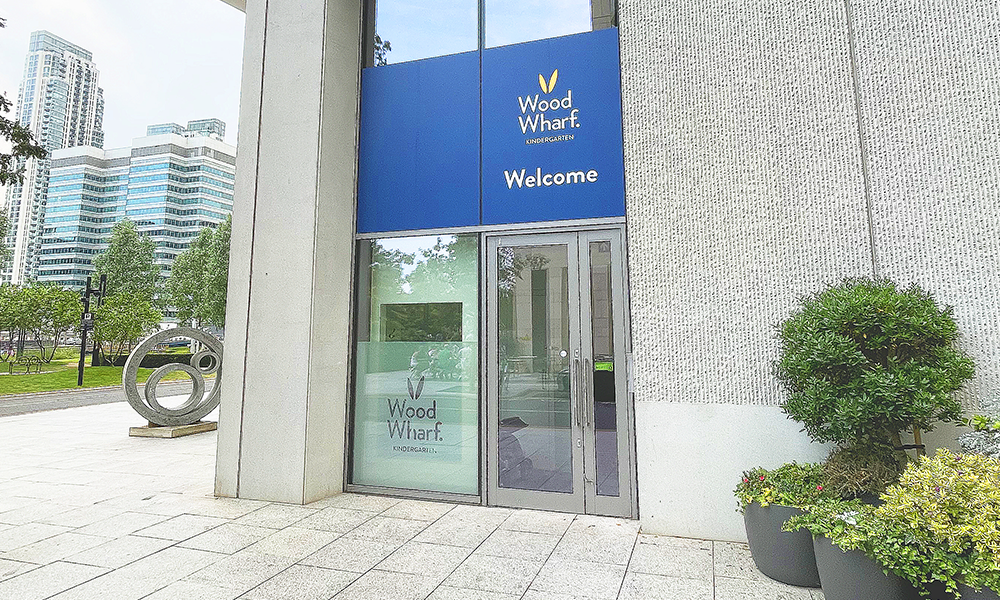Restaurateur Roberto Costa has engaged head chef Matt Colk to run his seasonal venue in Water Street
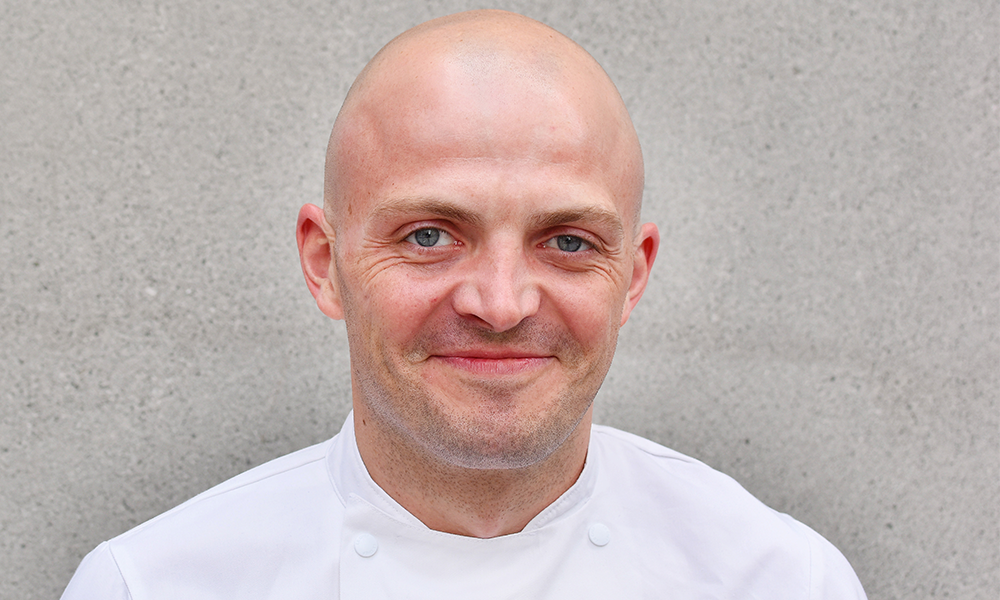
Subscribe to our Wharf Whispers newsletter here
There’s something a little bit radical about Fish Game that sets it apart from the carefully crafted interiors and presentation of its neighbours.
Dishoom has a delicately written founding myth about a rogue banker that informs its entire design.
Mallow has earthy colours with golden accents.
In contrast, Fish Game is the rock dropped into the serene waters of Wood Wharf.
Here there’s a giant artwork of a man apparently eating credit cards with his head wrapped in cling film, tree stumps supporting glass tables, colourful fishing floats and flailing squid hanging from the ceiling and a private dining room decorated with images of Mafia bosses.
The restaurant, which recently opened its doors is the latest creation of Roberto Costa – the man behind Macellaio RC, a chain of six establishments named in honour of the Italian word for butcher plus his initials.
These feature butchery as theatre and plenty of Italian produce and dishes as befits a son of Genoa.
Fish Game, however, is different again – a bamboozling, hedonistic sort of a place that nevertheless rests firmly on four pillars – bread, veg, fish and, naturally, game.
To ensure those pillars are well founded, Roberto has turned to head chef Matt Colk – who returns to E14 having previously spent eight years cooking at The Gun (a little further to the east and right on the Thames) before a brief flirtation with Soho and then Fish Game.
It’s some distance from his start in hospitality.
“I began cooking when I was 14 in a little chip shop in North Lincolnshire,” he said. “I went on to do graphic design at college but my part-time job in the kitchen was much more fun.
“When I was 18 I came to London and first of all worked at Christopher’s Restaurant And Martini bar in Covent Garden before moving on to Roast in Borough Market.
“Then I worked at the RAC Club in Pall Mall, winning Worshipful Company Of Cooks’ Young Chef Of the Year in 2013 before joining The Gun in 2015.”
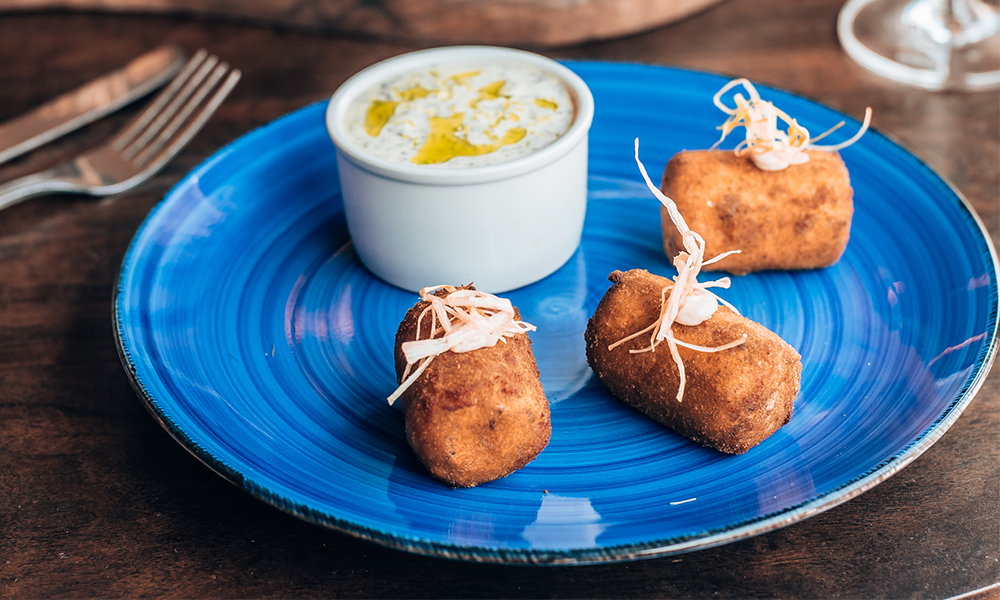
The approach at Fish Game, however, strikes a contrast with his previous roles.
Having impressed with two dishes he served Roberto during a cook-off, he got the job and then discovered things in his new restaurant would be quite different.
“Roberto wants everything rustic, a bit more rock ‘n’ roll – everything natural,” said Matt.
“He wants to change people’s idea of what food is – to try all the good bits that people normally get rid of.
“In the beginning it took time because I was making dishes the way I used to, but Roberto didn’t care for recipes or classics. Everything had to be different.
“That took a bit of time to get used to but I sought inspiration and had a few ideas.
“We’ve broken the menu down into four sections with bread, veg, seafood and meat. If you need advice the waiter or storyteller will come and advise you what to have.
“It can all come together or separately – that’s how people enjoy eating.
“They can share and there’s never any rush.
“Diners can have small plates or big plates, whatever they want, and then order more if they are still hungry.
“It’s simple food cooked well. Roberto loves the diversity of England’s produce and wants to showcase that.”
Early signs seem to indicate that’s something customers are eager to experience.
While only open a short time, bookings have been strong with Matt and his team of chefs working furiously to satisfy full services.
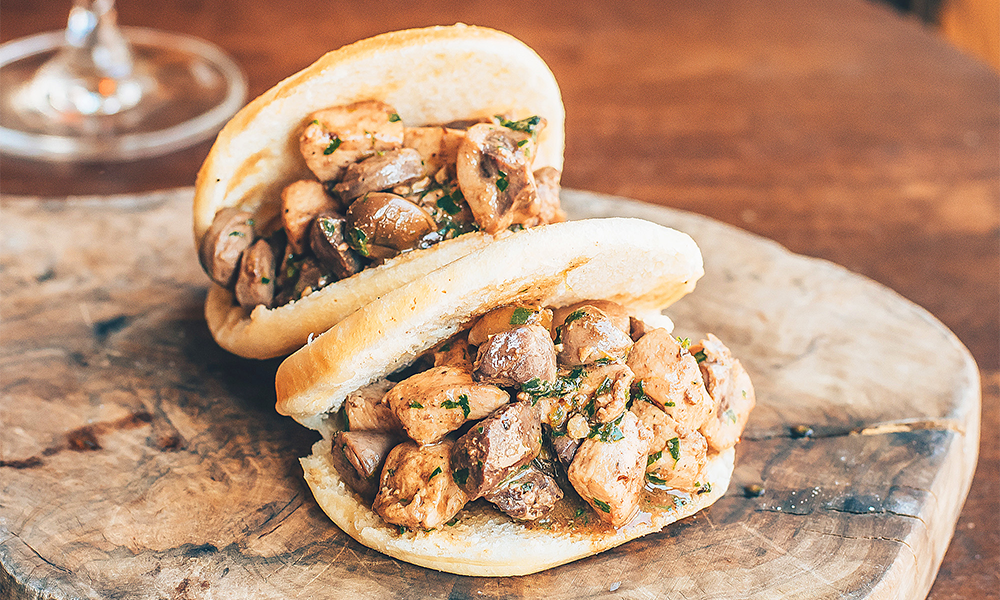
The menu is certainly a singular creation with ingredients cooked primarily on the ash and charcoal of Fish Game’s bank of grills.
“We’re in the middle of four really good restaurants here, but I love that this isn’t a chain,” said Matt.
“The feedback has been really good so far and people are getting used to the food.
“There are dishes on the menu that have taken two months to create, but the one everyone loves is something that took me five seconds to whip up.
“Roberto turned to me and said he wanted a squid dish on the menu – I asked when, and he said: ‘Now’. So I looked in the fridge, found a few ingredients and made the one that’s on there now.
“It’s charcoaled squid served with fermented chilli and fried cavolo nero – it just works. There’s a little bit of sugar and salt in there against that chilli sauce.”
Chilli is a big ingredient for Fish Game. In fact the restaurant is certainly the only place in Canary Wharf that boasts a tasting menu dedicated to the plant’s spicy fruit.
This offers diners the opportunity to taste peppers from Italian farm Vivi Piccante ranging in heat from a prickly 100,000 to 2.3million units on the Scoville Scale.
For contrast, a supermarket Jalapeno is around 2,500 units.
While Matt isn’t afraid of some spice, his dishes are designed to delight rather than melt guests, often focusing on less frequently used ingredients.
“I’m proud of the ox heart, which is marinated for 12 hours in garlic and chilli plus olive oil, that we source from near Roberto’s home in Italy,” said Matt.
“Then it’s seared on the charcoal and served with a crunchy carrot salad, with red onion, salt, pepper and lemon juice.”
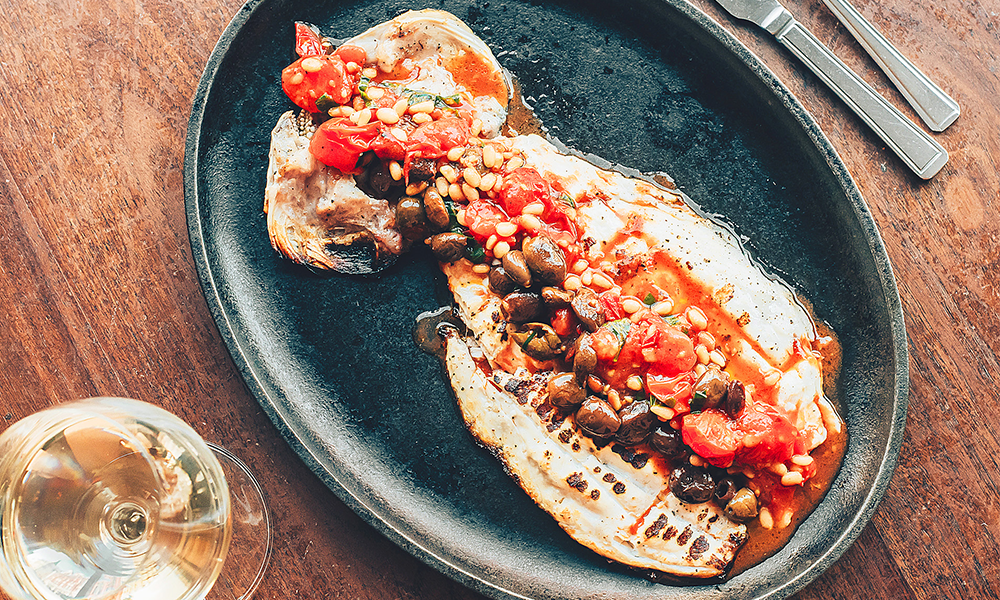
Other offerings include a gamey take on an Italian classic in hare arancini, a dish of smoked duck breast and duck leg, a venison tartare with bone marrow and rump of mutton with fresh mint and mustard.
Game dishes range from £6.50 to £52 for a beef ribeye off the bone with bone marrow.
On the aquatic side, there are oysters (£6 for two), langoustines with samphire, mussels with venison nduja and monkfish with rosemary, lime and sea salt.
Dishes range in price from £6 to £50 for a butterfly sea bream served with olive oil, cherry tomatoes, pine nuts and basil.
“If I was ordering, I’d start with the Tigella bread from Rome (£9), which is served with rabbit and offal cooked over ash and finished with parsley, fresh garlic and lemon juice,” said Matt.
“Then, of course, I’d have the squid (£9). Sometimes the people are right.
“They even rave about the potatoes we serve but they’re just crispy new potatoes with chilli, garlic, chives and lime.”
In addition to the skill of the chef – after all Matt used to write a recipe column for Wharf Life when he was at The Gun and we don’t let just anyone do that – key to the success of a restaurant is the produce it has to work with.
Fish Game promises to regularly change its menu to fit in with what’s in season, whether that’s meat, fish or vegetables.
“It’s a little early for game season at the moment, but come August 12 we will have grouse on the menu and we also plan to feature partridge, pheasant and quail at the right time,” said Matt.
“We’ll be sourcing our game from the Windsor Park Estate, which is pretty local to us.
“In fact, if they turn the menu over, diners will be able to see where we get all of the fish, meat and game that we use within the UK, which is a nice touch.
“For Roberto it’s important that we serve things that stand out.
“That includes the fact we only offer two desserts – a tiramisu that’s made at the table and a lemon tart with seasonal fruit.
“We’ve also got an ice cream machine that we’re going to use to make a gelato with olive oil and sea salt. It sounds ridiculous, but it’s really good.
“I’ve been here two months, but as for the future I’d love to win a Michelin star and then perhaps see if we can expand to another site or two.”
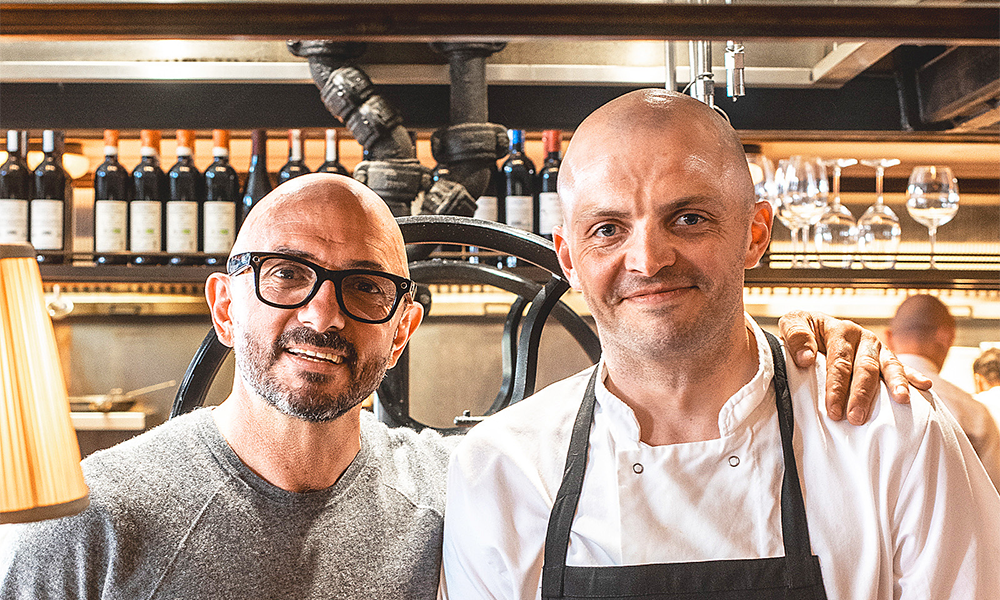
So there you have it, the Wharf’s latest arrival packed with unusual produce, dishes, decor and verve.
Fish Game is, Matt tells me, currently looking for talented chefs – who wouldn’t want to chance their arm at a project that aims to stand out and get noticed?
Oh, and before I forget to mention it, as if potent art, a chilli menu and plenty of food isn’t enough, the Water Street restaurant also distinguishes itself by offering drinks served from its extensive Agave Bar.
Specialising in Tequila, Raicilla and Mezcal (with a single Sotol on the list too) this promises to add a potent note to any dinner.
And there certainly isn’t time to go into a cocktail list that’s classified by a system of chess pieces.
You’ll just have to head down to Wood Wharf, bag a table and work your way through them, by which time the whole enterprise might make some kind of sense.
Find out more about Fish Game via this link
Read More: How Leo Weisz Therapy offers rapid, in-depth help
Read Wharf Life’s e-edition here
Subscribe to our Wharf Whispers newsletter here
- Jon Massey is co-founder and editorial director of Wharf Life and writes about a wide range of subjects in Canary Wharf, Docklands and east London - contact via jon.massey@wharf-life.com







